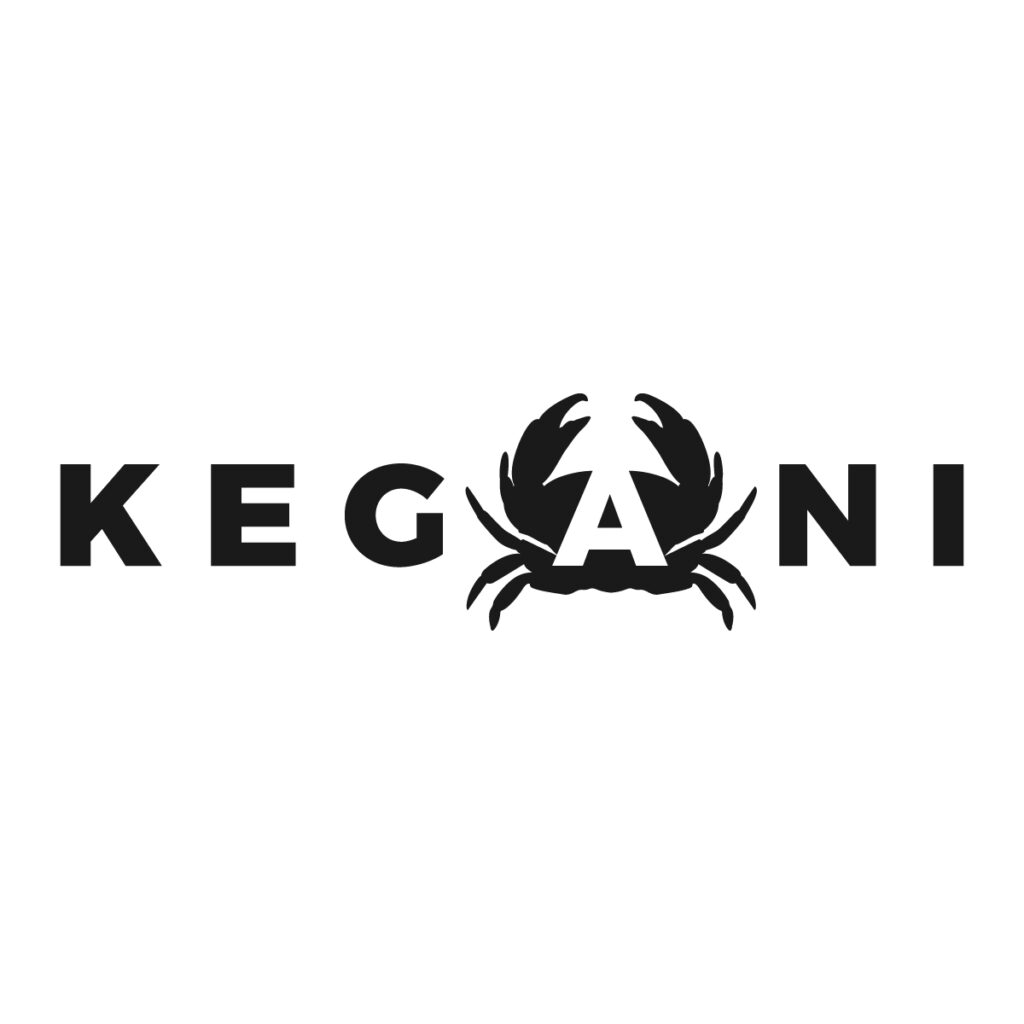As a knife seller, you know the handle can make or break a sale. But with Micarta and G10 both claiming top spot, how do you choose? We’ve been there, facing the same dilemma. With profit margins on the line, you need reliable info, not just marketing hype.
That’s where we come in. As fellow industry insiders, we’ve done the legwork, comparing Micarta and G10 across durability, grip, aesthetics, and cost.
This guide cuts through the fluff, giving you the hard facts to make informed decisions that’ll boost your sales.
Ready to get the edge on your competition? Let’s dive in!
Read More : Knife Handle Material types: Ultimate guide for sellers
Overview of Micarta and G10
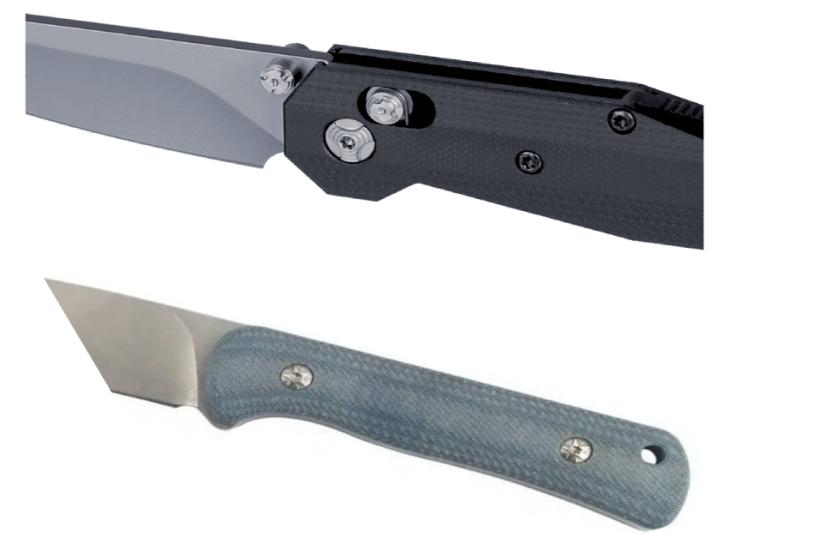
Before we dive into a head-to-head comparison, let’s take a brief history lesson.
Micarta, pioneered by Westinghouse in the early 1900s, was initially used for industrial insulation due to its excellent electrical resistance. Imagine, this material that now graces our knives was once used to protect us from high-voltage shocks!
Similarly, G10, developed in the mid-20th century, found its first home in military applications, prized for its ruggedness and resilience.
Today, both materials have found a new calling: crafting exceptional knife handles.
Micarta
Think of Micarta as a chameleon of the handle world. It’s a composite material, typically made by layering natural fabrics like linen, canvas, or even paper, and then binding them together with a resin, usually phenolic resin. This process creates a material that’s both tough and surprisingly beautiful.
Here’s a quick breakdown of common Micarta types:
- Linen Micarta: Known for its smooth, classic look and exceptional grip, even when wet. It offers a refined appearance and a softer feel, making it ideal for users who prioritize aesthetics and comfort.
- Canvas Micarta: Provides a rugged, textured feel with superior impact resistance. When comparing canvas and linen Micarta, the differences are evident: canvas Micarta is generally more durable and offers better grip in extreme conditions. It’s favored by those who need a robust handle for outdoor or heavy-use knives.
- Paper Micarta: Delivers a unique aesthetic with subtle layering and color variations. Notably, Richlite is a popular brand of paper Micarta.
- Denim Micarta: A lesser-known variant that combines the durability of traditional Micarta with the distinctive aesthetics of denim fabric, offering a stylish alternative for those seeking something different.
G10
Imagine G10 as the workhorse of handle materials. It’s also a composite, but instead of natural fibers, it uses glass fibers woven into a fabric and then laminated with epoxy resin. This results in a handle that’s incredibly strong, lightweight, and impervious to moisture.
For those interested in exploring other handle materials like carbon fiber, or FRN, check out our other articles for a comprehensive guide to knife handle options.
Micarta vs G10: Similarities and core differences
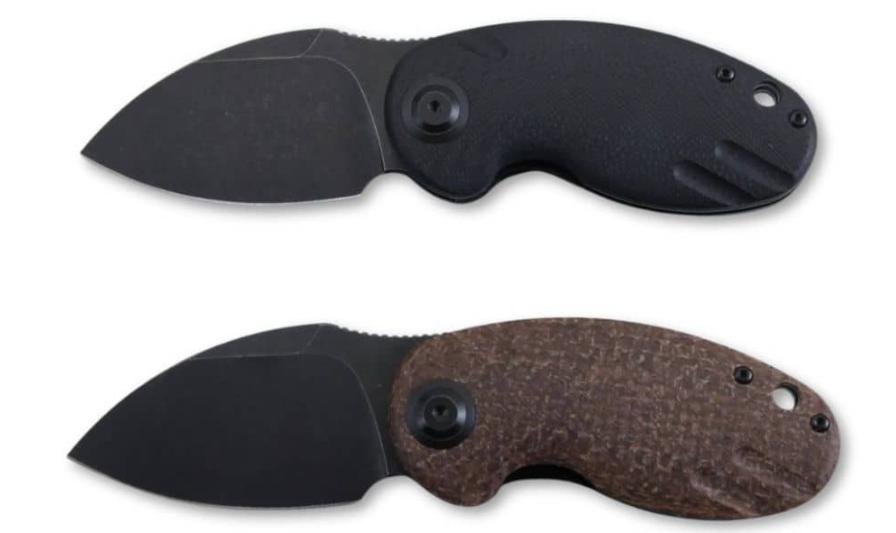
Let’s first look at the basic differences between Micarta and G10. We will explore their materials, how they are made, their physical properties, and their costs. This information helps us understand what makes each material unique.
Similarities
Composite Structure: Both Micarta and G10 are engineered by combining fibers with resin. This composite structure enhances their durability and strength. The fibers provide tensile strength, while the resin binds everything together, making for a solid handle that can withstand repeated use.
Manufacturing Process: Both materials are made by soaking fibers in a sticky glue and then pressing them together with heat, like making a sandwich where the layers are tightly packed and held together.
Core differences
The biggest difference between Micarta and G10 is the type of base material and resin used.
Base materials
- Micarta: Made from organic fibers like canvas, linen, or paper, making it more eco-friendly. The use of natural materials can provide a unique look and feel, with variations in texture and pattern that add character to each knife handle.
- G10: Primarily made from fiberglass, which is known for its strength and durability.
Resin type
- Micarta: Typically uses organic phenolic resin, which contributes to its warmth and feel. This resin can create a more tactile experience, as it feels less “plastic” compared to synthetic resins.
- G10: Uses epoxy resin, providing excellent rigidity and stability. The epoxy resin contributes to G10’s superior durability, making it highly resistant to impact and wear, even in harsh environments.
Start Working with a Professional Now
Physical properties
Understanding the physical properties helps users select the right material for their specific needs.
- Water Absorption:
- Micarta: Slightly water-absorbent, which can enhance grip when wet but may lead to swelling or warping if not dried. It’s best used in dry conditions.
- G10: Nearly impervious to water, maintaining grip and integrity in damp environments. Ideal for outdoor and survival knives.
- Heat Resistance:
- Micarta: Good heat resistance but may degrade under extreme temperatures over time.
- G10: Excellent heat resistance, remaining stable even in high-temperature situations.
- Electrical Insulation:
- Micarta: Provides good electrical insulation but can absorb moisture, affecting its properties if not maintained.
- G10: Offers excellent electrical insulation, making it suitable for tools where conductivity must be minimized.
Workability
How easy or difficult it is to work with each material can impact the final product.
- Micarta: Easier to work with during manufacturing, which allows for more intricate designs and finishes. The organic nature of Micarta means it can be shaped, sanded, and polished easily without the need for special equipment.
- G10: Requires special protective measures during processing due to potential health hazards from fiberglass dust. The production process can be more challenging, as G10 can be abrasive on tools and may require higher-quality cutting equipment to achieve the desired finish.
Cost
It influences the final price and market positioning of products made from each material.
- Micarta: Generally more expensive due to the organic materials and complex manufacturing process. The higher cost reflects the quality and craftsmanship involved in creating Micarta handles. Collectors and enthusiasts often appreciate its unique characteristics, which can justify the expense.
- G10: More cost-effective to produce, making it a popular choice for budget-conscious consumers. Its durability and low maintenance requirements provide excellent value, especially for users who prioritize performance over aesthetics.
| Property | Micarta | G10 |
| Base Material | Organic Fibers | Fiberglass |
| Resin Type | Phenolic Resin | Epoxy Resin |
| Water Absorption | Slight | Almost None |
| Heat Resistance | Good | Excellent |
| Electrical Insulation | Good | Excellent |
| Machining Characteristics | Easy | Requires Special Protective Measures |
| Cost | Expensive | Relatively Inexpensive |
Micarta Vs. G10: Head-To-Head Comparison
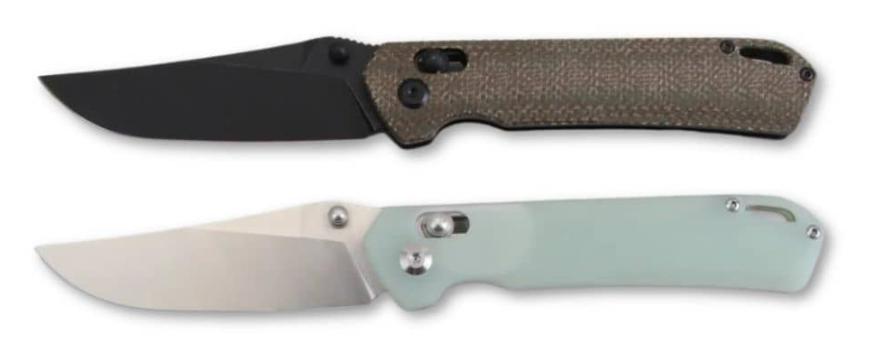
We’ve looked at the basic makeup and key differences of Micarta and G10. Now, let’s compare them in real-world use.
We’ll compare Micarta and G10 in terms of weight, looks, feel, grip, durability, and maintenance. These factors greatly affect how a knife feels and works in your hand.
Weight
The weight of a knife handle can significantly affect its balance and feel in hand.
Micarta is generally heavier than G10. Its base materials of linen, fabric, or paper result in a slightly denser material.
G10 is lighter than Micarta. The glass fibers used in G10 contribute to its lightweight properties.
Both G10 and Micarta are typically heavier than most woods used for knife handles.
The weight difference between G10 and Micarta can affect the balance point of a knife. For example, knives with G10 handles may have a slightly more forward balance point compared to those with Micarta handles of the same design.
Appearance and Color Selection
Micarta offers a natural look, especially in terms of color and texture, giving it a rugged yet stylish feel. Its color selection is relatively limited compared to G10, but different fabric types (such as canvas and linen) can create unique visual effects.
G10, on the other hand, is more flexible in terms of color and appearance, offering a wide range of color options and surface textures. Its design can present a carbon fiber-like effect, giving it a modern feel.
When you’re sourcing knives, remember that Micarta and G10 can make or break the look of different knife blade shapes. The right handle can turn a basic blade into a showstopper.
Texture and Feel
Micarta Offers a natural, rugged look with limited color options. Its appearance can vary based on the type of fabric used (canvas, linen, or paper), creating unique textures and patterns. Many users appreciate the earthy tones and organic feel of Micarta, making it a popular choice for traditional and outdoor knives.
G10 Provides a wide range of colors and patterns, allowing for greater personalization, making it a favorite among OEM knife manufacturers and private label knife manufacturers. G10 can mimic the appearance of carbon fiber or come in vibrant colors, making it appealing for modern and tactical knives.
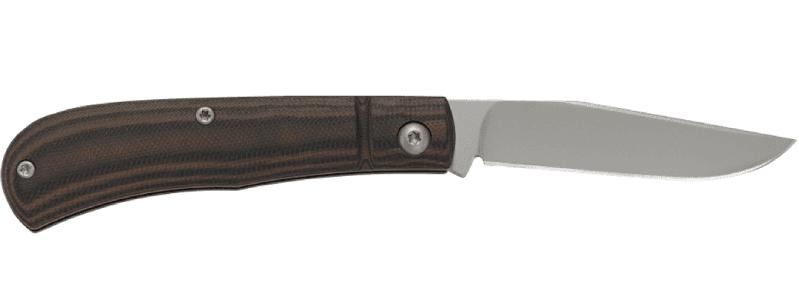
Grip
Micarta: Generally offers a strong grip, particularly in its canvas form. The texture can improve with use, providing a “broken-in” feel that many users find comfortable. However, when wet, Micarta can become slippery if not properly textured.
G10: The grip on G10 can vary based on surface texture. Smooth G10 may reduce grip in wet situations, but many manufacturers design G10 handles with textured patterns to enhance grip. This makes G10 suitable for tactical and outdoor applications.
Don’t forget, the grip of Micarta and G10 can make a big difference with various knife opening mechanisms. A good handle can make deployment smooth as butter or tough as nails.
Durability
Micarta: While durable, Micarta is sensitive to scratches and dents. It performs well under regular use but may show wear over time, especially in outdoor settings. It’s an excellent choice for users who handle their knives with care.
G10: Known for its exceptional durability, G10 is nearly indestructible and can withstand rough handling. It is resistant to moisture, heat, and chemicals, making it ideal for heavy-use environments.
Cleaning and Maintenance
Micarta requires regular cleaning to prevent the accumulation of stains and odors. Due to its water absorption, it is recommended to avoid using it in environments that frequently come into contact with water, especially in the kitchen.
G10‘s cleaning is relatively simple, with strong oil resistance, making it suitable for various environments and certain pocket knife uses. Simply wipe it with a damp cloth during cleaning, and the maintenance cost is low.
| Comparison | Micarta | G10 |
| Weight | Heavier than wood and G10 | Heavier than most timbers, lighter than Micarta |
| Appearance and Color Selection | Natural look, limited color selection | Flexible color and appearance, wide range of color options and surface textures |
| Texture and Feel | Natural feel, wood-like | Plastic-like and rigid |
| Grip | Strong grip, especially canvas Micarta | Smooth surface reduces grip, but various surface textures can improve grip |
| Durability | Relatively sensitive to scratches and dents | Almost indestructible, performs better under extreme conditions |
| Cleaning and Maintenance | Requires regular cleaning and avoiding water | Simple cleaning, strong oil resistance |
Pros and cons of Micarta and G10
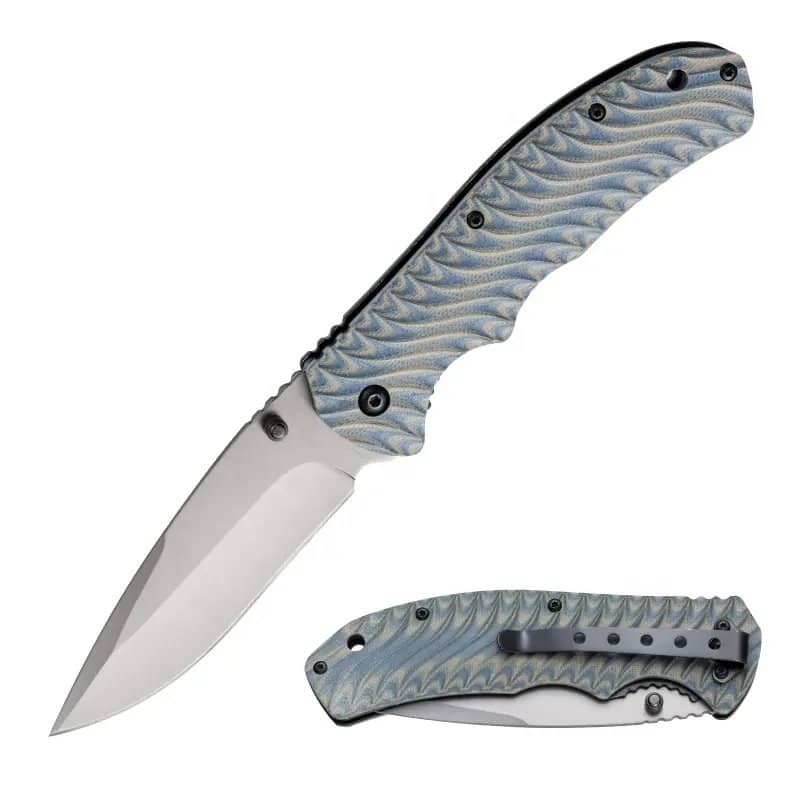
By examining both the basics and practical aspects, we get a full picture of these materials. This knowledge will help you make a smart choice for your next knife handle.
Here’s a quick summary of the key advantages and drawbacks of each material:
Micarta
Pros:
- Excellent grip, especially in wet conditions
- Natural feel and appearance
- Highly customizable, can be polished to different textures
- Relatively eco-friendly
Cons:
- Absorbs water, not completely waterproof
- Less durable than G10
- Limited color options
- May absorb oil and stains, affecting long-term appearance
- Relatively heavy
G10
Pros:
- Extremely durable and strong
- Excellent waterproofing
- Lightweight
- Wide range of colors and textures available
- Resistant to oil and stains, maintains appearance long-term
Cons:
- Grip may decrease in wet conditions
- Hard feel, similar to plastic
- Usually more expensive than Micarta
- Hazardous to work with
It’s important to note that while Micarta may be less durable than G10, it is still a highly durable material and more than sufficient for most users. Similarly, while Micarta may be heavier than g10, the difference in weight is usually negligible.
Start Working with a Professional Now
Micarta Vs. G-10: Knife Applications
Choosing between Micarta and G-10 ultimately depends on the intended use of the knife and the target audience.
Kitchen knives
G-10’s Advantages: G-10 is often preferred for kitchen knives due to its near-waterproof properties (water absorption rate <0.1%), making it easy to clean and resistant to bacterial growth.
Micarta’s Niche: Micarta offers a more natural feel but has a slight water absorption (2-3%). Some high-end brands use specially treated Micarta to improve water resistance while maintaining its excellent grip.
Tactical knives
Micarta’s Stealth Factor: Micarta is favored for its natural appearance and comfortable grip, especially in environments where stealth is crucial.
G-10’s Durability Edge: G-10 excels in durability and chemical resistance, making it suitable for high-intensity tactical applications.
Personal defense knives
Micarta’s Comfort Advantage: Micarta provides excellent grip and a comfortable feel, giving users reliable control in emergency situations.
G-10’s Stability Strength: G-10 is chosen for its durability and stability in various conditions, ensuring the handle remains intact during intense use.
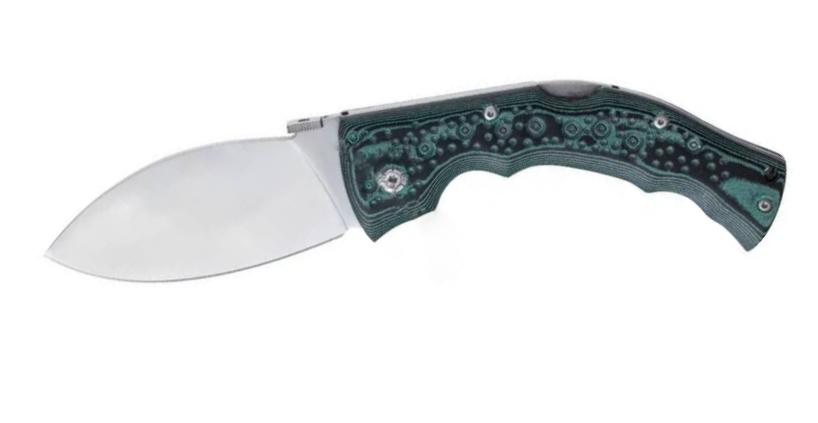
Outdoor and EDC Knives
Micarta’s Aesthetic Appeal: Shines in knives designed for everyday carry and outdoor adventures. Its natural beauty, resembling wood, and its comfortable, warm feel make it a pleasure to use.
G-10’s Rugged Reliability: G-10 offers superior durability for outdoor use, withstanding harsh weather conditions and frequent use in rugged environments.
Innovative Combinations
Some knife makers are experimenting with layering G-10 and Micarta, creating hybrid handles that combine aesthetics and performance.
By understanding the unique properties of Micarta and G-10, you can guide your customers toward the handle that best suits their needs and elevates their knife experience.
Sourcing Considerations For Wholesalers And Retailers
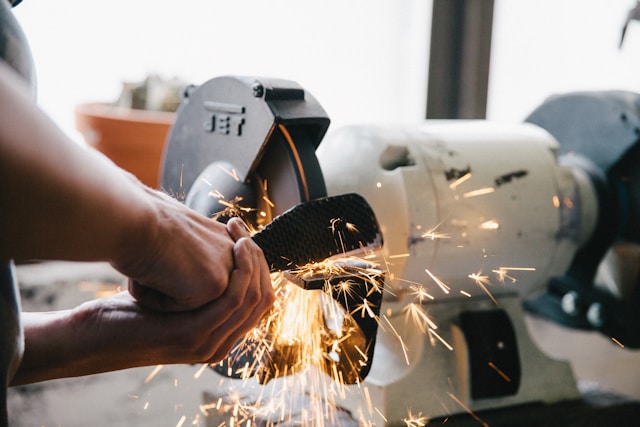
When sourcing knives with Micarta or G10 handles, wholesalers and retailers should consider the following:
Quality Control
Ensure suppliers adhere to strict quality standards. For Micarta, check for consistent layering and proper resin saturation. For G10, verify uniform color and absence of delamination.
Authenticity
Be wary of counterfeit materials. Genuine Micarta and G10 have specific characteristics that knockoffs often fail to replicate.
Customization Options
Consider suppliers who offer customization in textures, colors, and patterns to meet diverse customer preferences.
Pricing Strategy
Factor in the cost differences between Micarta and G10 when setting retail prices. Micarta’s higher cost may position it as a premium option.
Sustainability
With growing consumer interest in eco-friendly products, consider sourcing Micarta handles made from sustainable materials.
Certifications
Look for suppliers with relevant industry certifications, ensuring compliance with safety and quality standards, especially given the health risks associated with the generation of harmful dust during G10 production.
Market Demand
Stay informed about current trends and consumer preferences in your target market to stock the most appealing options.
Supplier Reliability
Choose suppliers with a track record of consistent quality and timely delivery to maintain your inventory and customer satisfaction.
Related Posts:
- 7 Chinese Knife Manufacturers Worth Checking Out
- A List of Active OEM Knife Manufacturers in 2024
- How to Bulk Purchase Wholesale Pocket Knives
Keganico: Your Source For Quality Chinese Knives

As you’ve discovered, both Micarta and G10 are exceptional handle materials – the key lies in choosing the right one for your specific knife design and target customer. But just as crucial as the material itself is the craftsmanship and quality of the manufacturer.
That’s where Keganico comes in. We specialize in connecting your businesses with the best Chinese knife manufacturers, ensuring you receive top-tier knives with handles that meet your exact specifications.
Whether you’re looking to source Everyday Carry Knives, Camping knives, Tactical knives, Hunting Knives, Survival Knives, or Kitchen Knives, our expertise in Micarta, G10, and a wide range of other handle materials ensures you’ll find the perfect fit.
Ready to elevate your knife offerings? Explore our OEM, Private Label, and Wholesale services and get a quote today!
